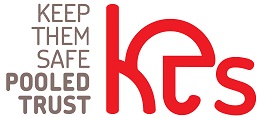Medicaid Eligibility Expansion for New Yorkers
begins January 2023
What’s happening?
UPDATE on 2/22/2023: The New York State Department of Health has published the official Medicaid income eligibility levels. These levels have been raised to 138% of the FPL, which is the Federal Poverty Level. Individual income levels for 2023 are now $1677 monthly/$20,121 yearly and for couples $2268 monthly/$27,214.
Effective January 1, 2023, New York State’s 2023 Fiscal budget is expanding the ability of New Yorkers who are 65+, blind, or disabled to qualify for Medicaid coverage by:
- raising the allowable amounts for Medicaid income eligibility level to 138% of the Federal Poverty Level (FPL), and
- increasing the allowable asset maximum limit for Community Medicaid long-term care recipients significantly.
This move to expand Medicaid eligibility is a result of the New York State (NYS) Legislature and the Governor reaching an agreement on the NYS Budget on April 8, 2022.
Who is affected by this Medicaid Expansion?
- Medicaid program recipients or those seeking Community Medicaid long-term home care including 65+ years or older, blind, and/or disabled individuals will be affected by the increased eligibility levels for income and assets.
What you need to know.
Due to these two areas of expansion, income, and assets, more New Yorkers will qualify for Medicaid long-term home care. Here are the details:
- Increased Income Levels
Income amount for Medicaid eligibility will be raised to 138% (from 100%) of Federal Poverty Level. Sources of income that are counted include social security, retirement account distributions, pension, income payable from a trust, and rental income.
- Individuals – Change of individual income level as follows:
- 2022 – $934 monthly
- 2023 – $1677 monthly
- Couples – Income level change for couples who both receive care as follows:
- 2022 – $1367 monthly total
- 2023 – $2268 monthly
- Increased Asset Limits
Allowable asset maximum limit for Community Medicaid long term care recipients has increased substantially for 2023. Assets that are counted include checking accounts, savings accounts, brokerage accounts, CDs, non-qualified annuities, individual stocks, real estate (not primary residence), and cash surrender value of life insurance. The following, however, are not counted as assets for eligibility purposes: tax-deferred retirement accounts, and traditional IRAs and 401ks, in payout status.
Here are the new asset levels:
- Individuals – Change of asset maximum level as follows:
- 2022 – $16,800
- 2023 – $30,182
- Couples – Asset maximum limit change for couples who both receive care as follows:
- 2022 – $24,600 combined
- 2023 – $40,821 combined
What if you are above the levels of income for eligibility?
If your monthly income exceeds eligibility income levels, you can still qualify for Medicaid long-term home care benefits in two ways. You can spend down your excess income or join a pooled trust. Both are accepted and common ways to gain eligibility.
- “Spend down” your excess income
In order to be eligible for Medicaid, the government requires you to “spend down” your excess income by subtracting medical expenses, including deductibles and premiums, to lower your monthly income to a level that qualifies you.
- Join a pooled income trust
If you apply for Medicaid but discover you are not eligible due to excess income and don’t want to spend down, joining a pooled trust can help you qualify for benefits. To gain eligibility, you would deposit your monthly excess income into the trust, which can be used to pay qualified monthly bills.
How to become eligible for Medicaid with excess income:
Here’s an example of what people like Sally can do to become eligible for Medicaid home benefits.
- Sally’s income exceeds the eligibility amount by $550 per month, which makes her ineligible for Medicaid home care benefits.
- In order to qualify for Medicaid long-term home care benefits, Sally will need to “spend down” the $550 excess income by paying qualified medical bills.
- Another way Sally can become eligible without having to spend down her excess income is by joining a pooled trust. By doing so, Sally’s excess income can be used to pay her monthly living expenses, like rent, clothes, food, and utilities instead of having to spend down the excess.
See how KTS Pooled Trust can help you meet the eligibility requirement and avoid the required “spend-down” of your excess income with a free consultation.





